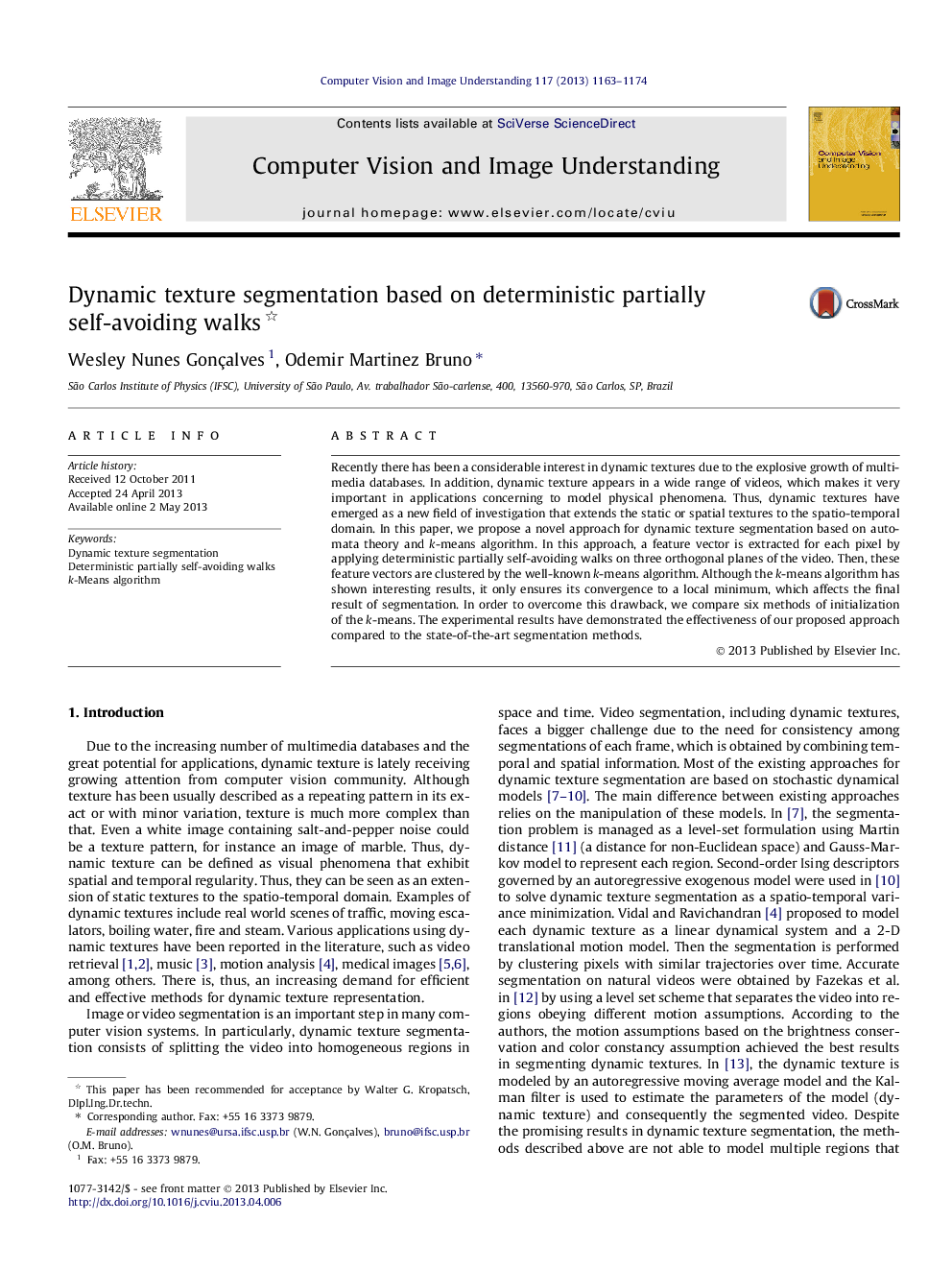| Article ID | Journal | Published Year | Pages | File Type |
|---|---|---|---|---|
| 525797 | Computer Vision and Image Understanding | 2013 | 12 Pages |
•A video segmentation based on dynamic texture is proposed.•The method uses deterministic partially self-avoiding walks and a k-means.•The sequence of images is considered as a 3D matrix, which is split into blocks.•A feature vector for each block is obtained using the deterministic walks algorithm.•k-Means algorithm clusters is used to obtain the video segmentation.
Recently there has been a considerable interest in dynamic textures due to the explosive growth of multimedia databases. In addition, dynamic texture appears in a wide range of videos, which makes it very important in applications concerning to model physical phenomena. Thus, dynamic textures have emerged as a new field of investigation that extends the static or spatial textures to the spatio-temporal domain. In this paper, we propose a novel approach for dynamic texture segmentation based on automata theory and k-means algorithm. In this approach, a feature vector is extracted for each pixel by applying deterministic partially self-avoiding walks on three orthogonal planes of the video. Then, these feature vectors are clustered by the well-known k-means algorithm. Although the k-means algorithm has shown interesting results, it only ensures its convergence to a local minimum, which affects the final result of segmentation. In order to overcome this drawback, we compare six methods of initialization of the k-means. The experimental results have demonstrated the effectiveness of our proposed approach compared to the state-of-the-art segmentation methods.
